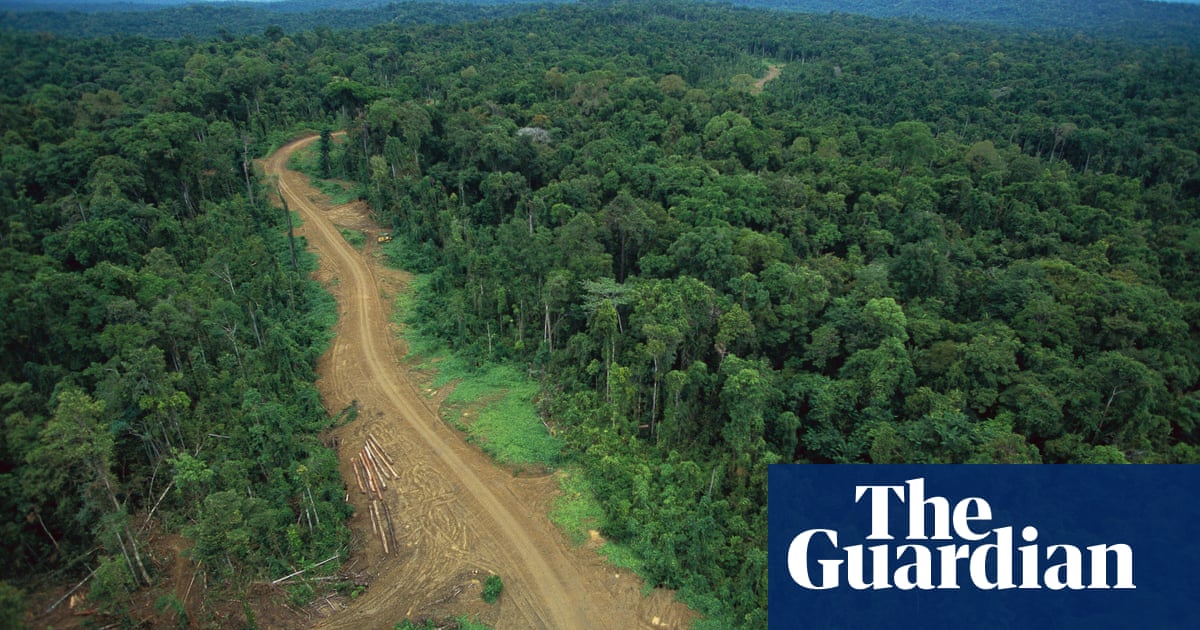
A vast network of undocumented “ghost roads” is pushing into the world’s untouched rainforests and driving their destruction in the Asia-Pacific region, a new study has found.
By using Google Earth to map tropical forests on Borneo, Sumatra and New Guinea islands, researchers from James Cook University in Australia documented 1.37 m kilometres (850,000 miles) of roads across 1.4m sq kilometres of rainforest on the islands – between three and seven times what is officially recorded on road databases.
These ghost roads, which include bulldozed tracks through natural rainforest and informal roads on palm-oil plantations, were “almost always” an indicator of future destruction of nearby rainforests, according to the study published in the journal Nature. They are “among the gravest of all direct threats to tropical forests”, the researchers concluded.
“They’re being constructed by a range of people, including legal or illegal agriculturalists, miners, loggers, land grabbers, land speculators and drug traffickers,” said Prof Bill Laurance, a co-author of the study. “By sharply increasing access to formerly remote natural areas, unregulated road development is triggering dramatic increases in environmental disruption due to activities such as logging, mining and land-clearing.”
A team of more than 200 trained volunteers and study authors performed the analysis over a combined 7,000 hours. They estimate 640,000 hours would be required to map all of the roads on Earth.
“There are some 25m kilometres of new paved roads expected by mid-century and 90% of all road construction is happening in developing nations, including many tropical and subtropical regions with exceptional biodiversity,” Laurance said.
“Worryingly, our new findings show that the extent and length of roads in the tropical Asia-Pacific is severely underestimated, with many roads being out of government control. In these findings, nature is the big loser.”
The researchers said their findings tally with earlier studies in Cameroon, Solomon Islands and Brazil, with road building almost always preceding local forest loss.
“Informally or illicitly constructed ghost roads can be bulldozed tracks in logged forests, roads in palm-oil plantations and other roads missing from existing road datasets for various reasons,” said Laurance.
Last year, the destruction of the world’s most pristine rainforests continued at a relentless rate despite efforts to slow the loss. While there were falls in Colombia and Brazil, the world lost an area nearly the size of Switzerland from previously undisturbed forests.
The survival of rainforests is essential to meeting the goals of the Paris agreement to limit global heating to 1.5C and the Kunming-Montreal framework on biodiversity.
Find more age of extinction coverage here, and follow biodiversity reporters Phoebe Weston and Patrick Greenfield on X for all the latest news and features
Read More: World News | Entertainment News | Celeb News
Guardian







